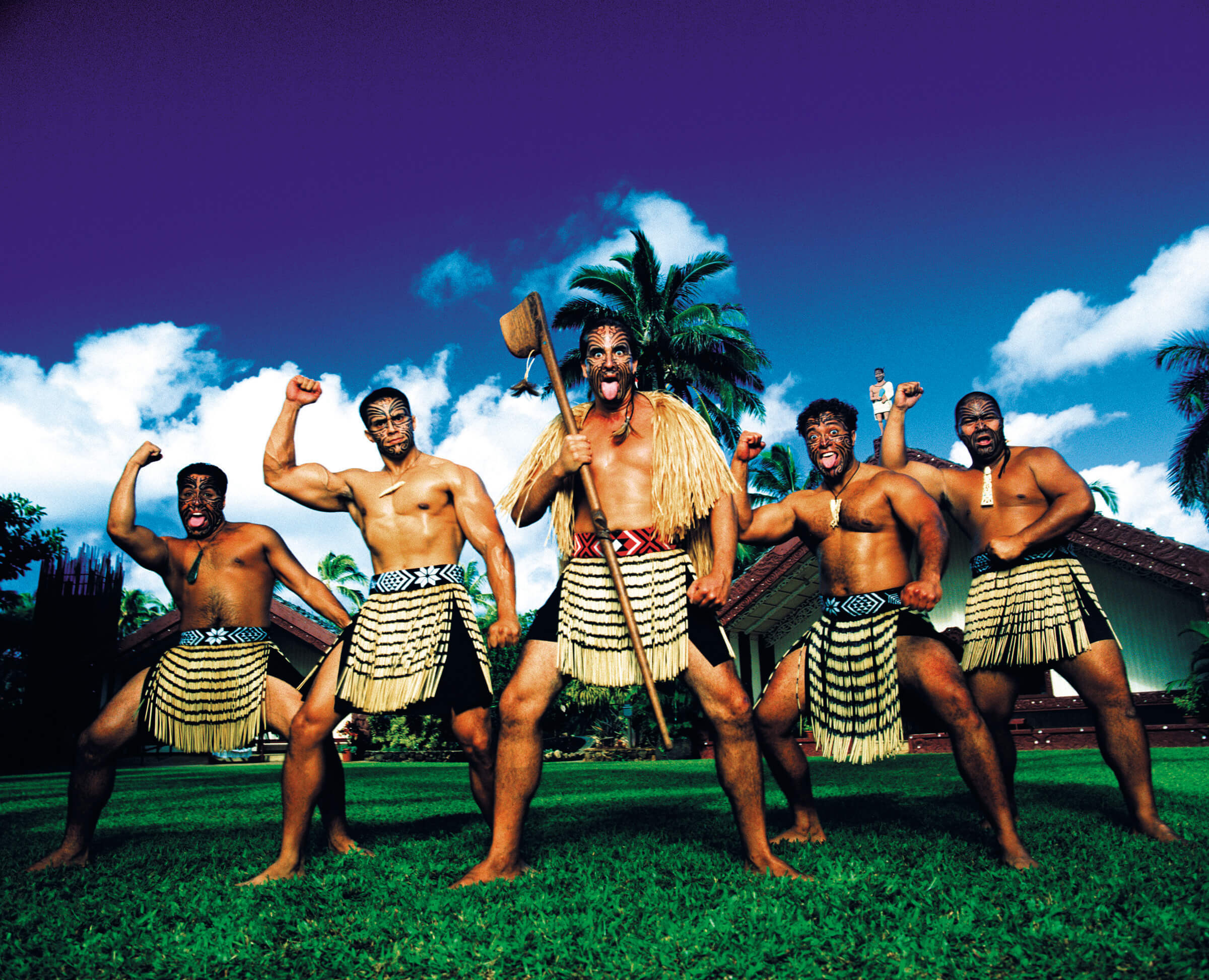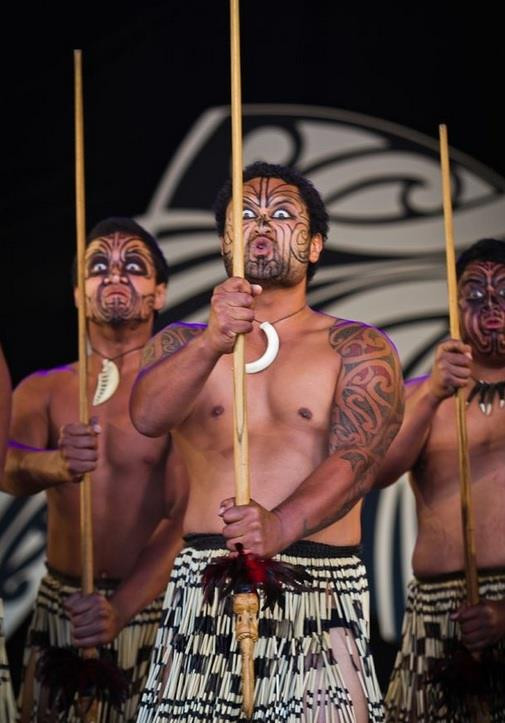The first time I witnessed a haka performance, it was in high school, performed by a New Zealand dance troupe in Hilo. The sheer power and intensity were overwhelming. I was instantly captivated, experiencing goosebumps and even tears. It was a truly awe-inspiring moment, leaving me speechless and deeply moved.
 Maori Haka group performing with intense expressions and traditional attire
Maori Haka group performing with intense expressions and traditional attire
Since joining the Polynesian Cultural Center, my appreciation for the haka, this ancient Maori tradition from New Zealand, has only deepened. Often referred to as a Maori Battle Dance or challenge, the haka is a performance I can watch repeatedly and always find myself fascinated.
 Close-up of a Maori Haka performer showing intense facial expression and tongue protrusion
Close-up of a Maori Haka performer showing intense facial expression and tongue protrusion
The haka is a traditional dance of the Maori people characterized by vigorous movements, rhythmic stamping, and a powerfully chanted accompaniment. Performers utilize a range of actions, including widening the eyes to show the whites, protruding the tongue, fierce facial expressions, hand slaps against the body, and foot stamping. To me, the haka resembles a symphony, where different body parts act as instruments. Hands, arms, legs, feet, voice, eyes, tongue, and the entire body work in unison to express a spectrum of emotions, from courage and defiance to joy and grief, depending on the occasion.
Historically, the war haka served a crucial purpose. Warriors would perform this battle dance before engaging in combat, using it to proclaim their strength, prowess, and intimidate their adversaries. However, the haka’s significance extends beyond the battlefield. It is also performed to welcome esteemed guests, celebrate significant achievements, and mark important occasions such as funerals.
In contemporary society, the haka is frequently used to challenge opponents in sports arenas. When performed in this context, the challenge is not merely about asserting dominance but also about honoring the opposing team’s worthiness. In traditional Maori gatherings, a haka challenge can be extended to visitors as a statement of equality in honor and power.
The haka is far more than just a vigorous and energetic dance. It is imbued with profound meaning and cultural significance, conveyed through both its powerful movements and the chanted words. To truly appreciate the awe of the haka, I recommend watching this captivating video by the Maori dance troupe “Te Iti Kahurangi,” recorded and presented by Maori Television. It may well evoke the same chills and goosebumps I experienced during my first encounter with this powerful expression of Maori culture many years ago.
Video from Maori Television.

